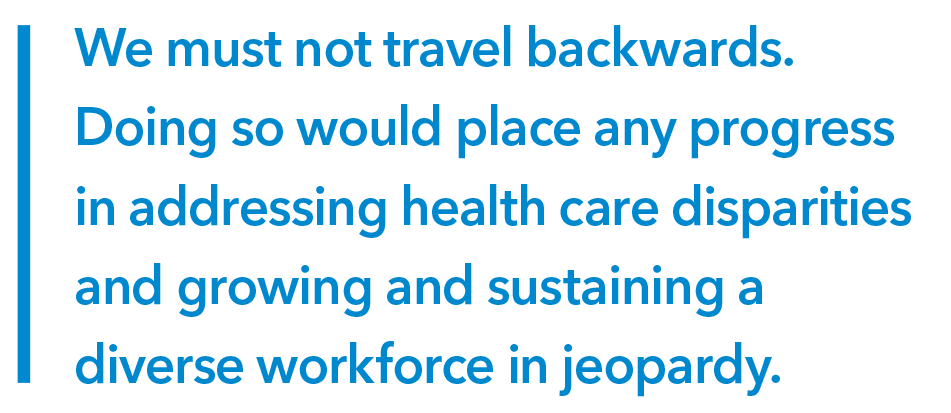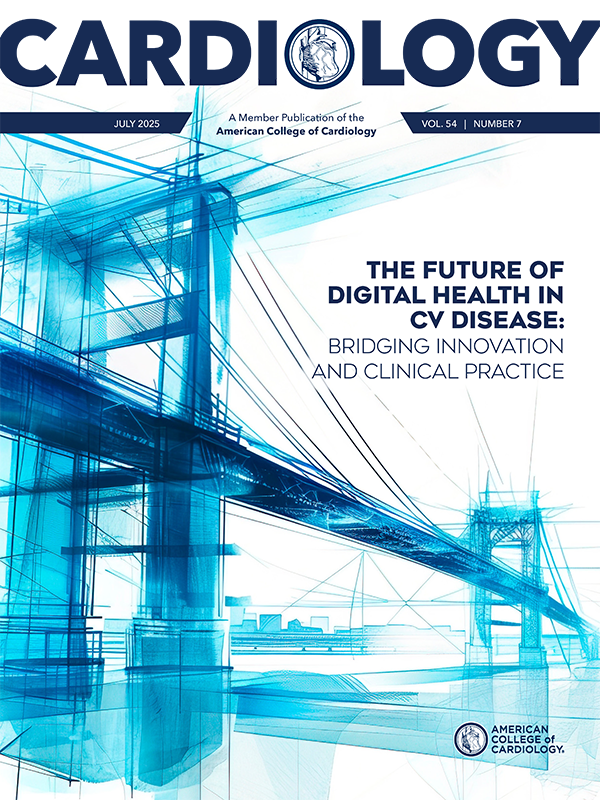From the Member Sections | Stronger Together: What Sports Taught Me About Inclusion in Cardiology

As a former NCAA Division I track and field All-American and Olympic Trials finalist, I found the 4 x 400-meter relay race the epitome of track as it requires strength, strategy, stamina and speed. Each of the laps has its own aura and without a concerted and unified effort by all athletes, the team loses. In track and field, what's at stake is months, even years of training, the thrill of victory, and the sense of accomplishment.
But what happens when it's not a track event or a race? What happens when the journey is a personal one – from a dream, to focused determination, to a tangible contribution toward a greater good? What happens when that journey is mine: from an aspiring athlete and scientifically curious student to a medical professional, a cardiologist navigating a career currently beset by the challenges facing diversity and inclusion? Today, a peer, a patient, a stranger may look at me and think only "DEI" – a label, often pejorative – discounting my scholarship and questioning my place. How did we get here? Does diversity and inclusion still matter? Did it ever?
Nearly five years into my faculty position I still encounter a patient at least once a month who is amazed – and frankly excited to see – a woman in my position. The moment is palpable but also poignant. While senior leaders in the field recount similar stories from 40 years ago, it is now 2025. How can this still be the experience? These scenarios stay etched in my mind and have a tremendous impact on me.
The moniker of diversity, equity and inclusion followed the troubled path of affirmative action, which itself was preceded by the noble Civil Rights movement. The sinew holding all three together is a deep awareness of longstanding social inequities that ultimately manifest as health disparities. History cannot be erased. These inequities perpetuated and persisted in a time when heterogeneity in the workforce was minimal.
A working hypothesis eventually emerged: Would broadening the workforce through diversity of thought and inclusive excellence help reduce health inequities? The early answer is yes, but disparities persist. Today, the populations affected extend far beyond the original cohorts defined by race or ethnicity. The teams in this ongoing race now include people in rural communities, individuals without a college education, those living with disabilities, and those for whom English is not a first language.
If the composition of the workforce matters, then a description of racial and sex distributions, particularly in cardiology, is important. According to recent data, approximately 66% of practicing cardiologists in the U.S. are White, while only 5% are Black, 18% are Asian and 9% are Hispanic. Only 13% of cardiologists are women.1 Although important progress has been made, there is more work to do to ensure the cardiovascular profession is representative of the diverse patient populations we serve.

We must not travel backwards. Doing so would place any progress in addressing health care disparities and growing and sustaining a diverse workforce in jeopardy.
The original purpose of diversity and inclusion efforts was to improve the community at large. Case in point is the genre I know well – competitive athletics. Increasing inclusiveness in sports profoundly transformed the field, reshaping competition, culture, economics and social progress. Consider how Jesse Owens elevated the level of competition in the 1936 Olympic Games, winning four gold medals. Jackie Robinson's entry into Major League Baseball in 1947 shattered racial segregation in professional sports and paved the way for integration in other leagues. Tiger Woods in golf, Venus and Serena Williams in tennis, and Lewis Hamilton in Formula One Racing have all made lasting impacts on their respective sports.
Inclusivity in sports has broken racial barriers, elevated competition and influenced culture, in ways that continue to profoundly shape athletics and society today.
Yet despite these advancements, disparities in cardiovascular sports health persist. Black athletes face a higher incidence of sudden cardiac death compared to their white counterparts.2 Socioeconomic barriers, limited access to preventive care and underrepresentation in clinical research all contribute to this inequity. Confronting these challenges demands a strong, sustained commitment to diversity and inclusion within cardiology. The research must continue – because failing to do so risks the premature loss of young lives.
There is value in a diverse workforce. There is value gained by having people from different backgrounds working together and sharing perspectives. There is value in representing the many different patients who seek our care. There is value in restoring trust in a health care system that many feel is unwelcoming.
I return to the 4 x 400-meter relay race where all team members must work together and leverage their collective strengths to be the first to the finish line. If the baton is dropped within the passing zone, even in an area where the runner can retrieve it without disqualification – any benefit of a good beginning is lost, and the race is futile. Time lost is crucial.
The same is true for the field of medicine, especially cardiology. By coming together to prioritize policy change, increase representation and expand access to care, we have an opportunity to continue passing a winning baton and creating a profession that is representative and inclusive of the patients it serves. Otherwise, we risk losing valuable time and further widening health disparities – a loss for the profession and a lost for patients.

This article was authored by Jeomi Okwara, MD, assistant professor, Department of Internal Medicine at UT Southwestern Medical Center, and a member of the ACC Sports and Exercise Cardiology Member Section. She thanks Clyde W. Yancy, MD, MSc, MACC, for his review of this article.
References
- Zafar MDB, Jamil Y, Bilal M, et al. Impact of Racial, Ethnic, and Gender Disparities in Cardiology. Curr Probl Cardiol 2023;48:101725.
- Krishnan S, Guseh JS, Chukumerije M, et al., for the American College of Cardiology Sports and Exercise Leadership Council. Racial Disparities in Sports Cardiology: A Review. JAMA Cardiol 2024;9:935-43.
Clinical Topics: Cardiovascular Care Team, Sports and Exercise Cardiology
Keywords: Cardiology Magazine, ACC Publications, Workforce, Diversity, Equity and Inclusion, Track and Field, Athletes, Healthcare Disparities, Sports
